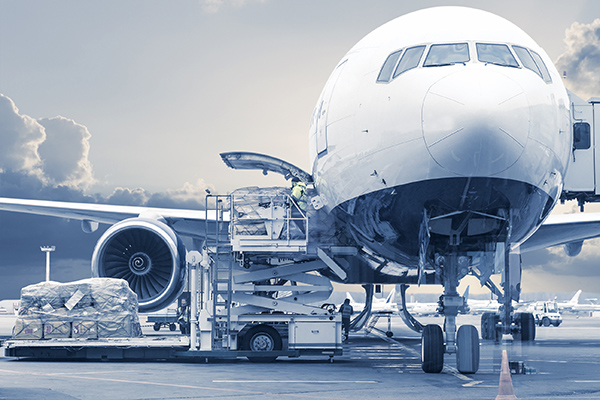Drewry Supply Chain Advisors sound bullish note on current state of air cargo
BREXIT, notwithstanding, London-based consultancy says air cargo demand remains strong.
Skip Dokken, a consultant with London-based Drewry Supply Chain Advisors, tells Logistics Management in an exclusive interview why he’ s bullish on the air cargo industry this year.
Logistics Management: How may we best summarize the current state of the air cargo market? Does it continue to strengthen, or has it plateaued?
Skip Dokken: The market is strong! Not only are volumes good, but he make-up of the whole market is good. New and old carriers are providing the service to meet customer’s needs. Forwarders are constantly improving in what the offer their clients and doing what they say. Integrators and new e-commerce carriers are evolving and growing trying to meet their customer’s requirements. And the market hasn’t plateaued at all. We’ll continue to see new carriers come in and others exit. And the types and levels of service will continue to grow as technology continues to improve and provide new offerings and means for growth.
LM: What are the biggest macroeconomic drivers for the industry and how are they re-shaping air cargo market?
Dokken: In the “old” days it wasn’t that difficult to model the air cargo industry using economic variables. But today’s environment is full of non-economic drivers (mainly political) which cannot be easily modeled by a computer. So the biggest driver (in terms of impact, but not volumes) is uncertainty. Will old trade alliances break down and new ones pop up? Will the trend toward more nationalism and less globalization cause major shifts in trade flows? And will the political moves of countries provide more impact than the true economic changes of growing and declining economies?
LM: Where are volumes headed? Why?
Dokken: Given what I’ve said above, it’s tough to project futures volume trends. I’m sure that there will continue to be global growth, but the rates by geographic sector will move and shift as non-economic factors come and go.
LM: Where are rates headed? Why?
Dokken: I always love to hear talk about rates. Each group tries to put forth what it hopes will be a self-fulfilling prophesy. Airlines tell the forwarders that rates will be going up due to increased financial pressures (costs and CEOs). The forwarders in turn give their clients the heads up that rates will be going higher due to the squeeze by the carriers and operating costs. But the clients have their CFOs saying cut your budget by x% and then threaten to go out for bid if their rates aren’t lowered. Nothing new. So where rates are headed will be driven as always by our friends Supply and Demand. Basically today we are at a pretty good place in most economies which should keep volumes, and hence rates, stable going forward. But if new events the likes of a Brexit or a China-US trade war show up, then the uncertainty would likely cause unplanned purchases which will push demand up and hence rates. If the talked about approaching recession begins to come to fruition, then less Demand will push rates down. Again, not knowing what non-economic events are coming (including natural catastrophes), the real direction of rates is tough to forecast.
LM: Can you provide an assessment of global e-commerce airfreight volumes and reflect on The “Amazon Air” effect?
Dokken: One needs to remember that a large portion of the current e-commerce volumes used to be volumes that moved to DCs and then to brick and mortar stores. So e-commerce is definitely driving volume growth, but it’s not a new volumes just a shift in distribution. But even as traditional volumes move to an expedited e-commerce mode, there will also be a segment of new growth that comes from people finding it easier to shop, buy and get rewarded using e-commerce. The “Amazon Air” effect will be fun to watch. Seeing how FedEx and UPS respond to large amounts of Amazon business moving to Prime Air can create a business school case study. But more important is how Amazon deals with the huge expenses that come from flying airplanes. Have they done all their homework and can profitably operate the fleet? Or will the direct and indirect cost of flying and delivering be overwhelming? Fun to watch.
LM: Which e-commerce companies are flying now, and what are their equipment needs?
Dokken: Look back to the old days when you had Burlington Northern and Emery starting up and air network from scratch. You needs planes, trucks, facilities, systems and dedicated people who like their job.
LM: How will shippers and carriers overcoming global cross-border e-commerce impediments?
Dokken: The only way for the world of e-commerce to survive and grow is to continue the path that has been blazed before them by carriers, forwarders and integrators. Get rid of paper, connect all parties in the supply chain (including governmental agencies), continue to move toward a common language for global trade and work toward more open trade. The problem is that while we need to do the same things we have done in the past, the bar keeps getting raised as things like terror, hacking and protectionism grow.
LM: What about the more mature markets? Any new innovations taking place there?
Dokken: I think that mature market more than emerging markets are the target the new disruptors. These new companies have innovative ideas which may or may not meet the customer needs, but at least they’re coming forth with new thoughts. And since more traditional stakeholders are larger in mature markets, they will pick up and react to the suggested innovations in their own way which will make the whole industry better. Being a “traditionalist” doesn’t mean you can’t innovate and compete with disrupters.













